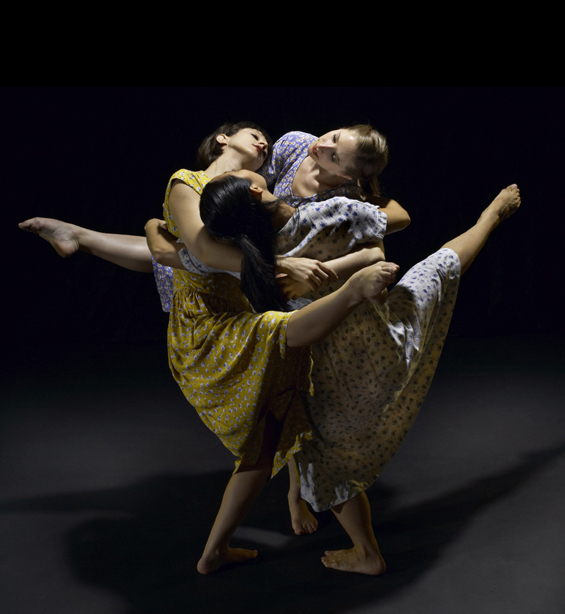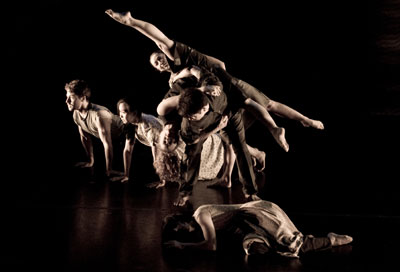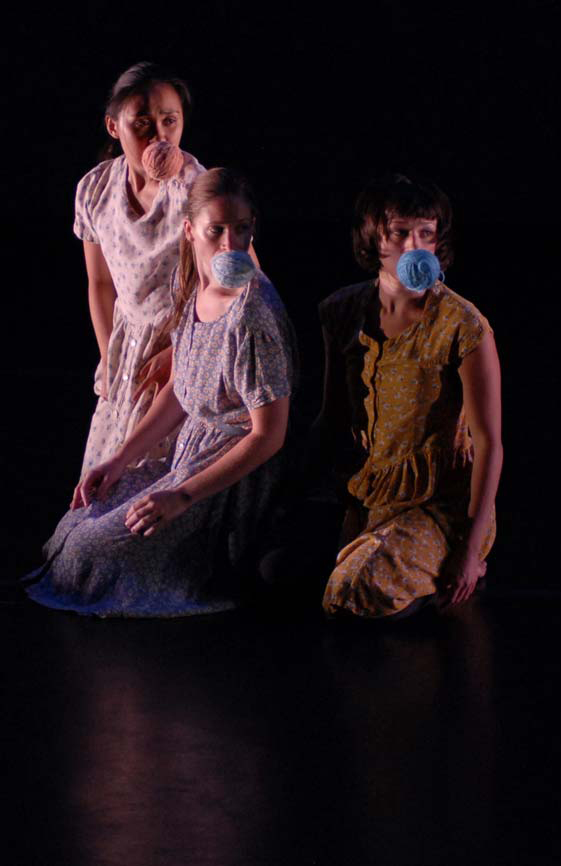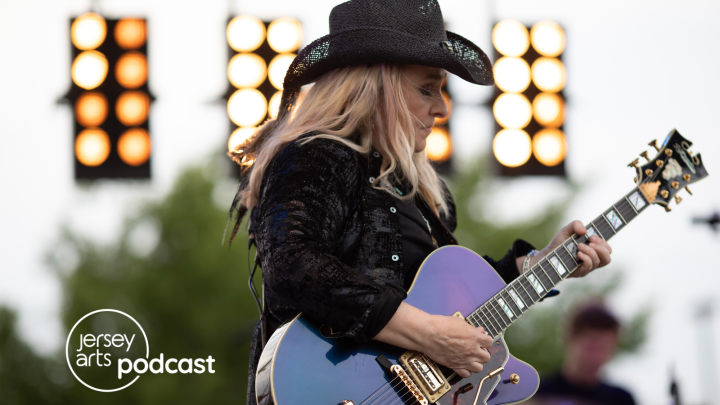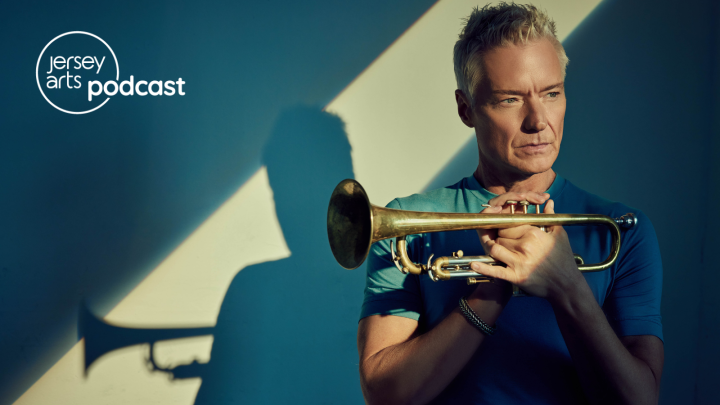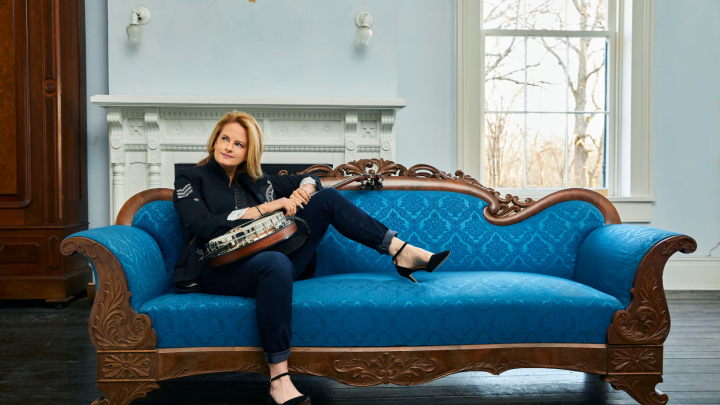A Dance of Hope: Carolyn Dorfman Dance Company's "The Legacy Project"

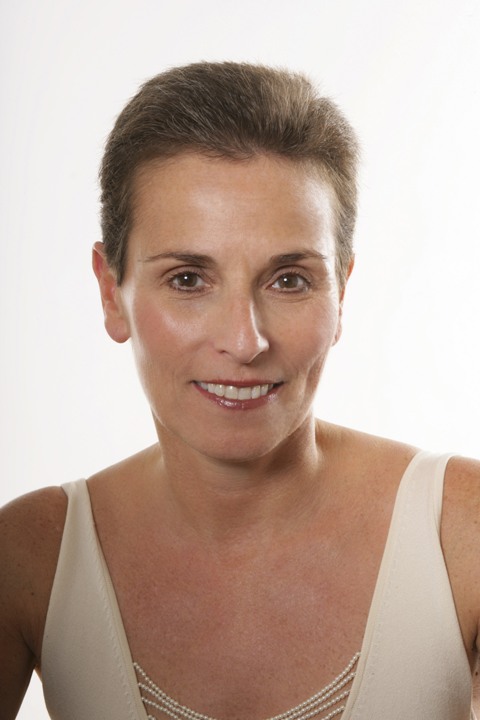
Carolyn Dorfman
Carolyn Dorfman grew up surrounded by stories of the Holocaust.
Her parents were teenagers in Poland when World War II broke out. Her father survived in hiding. Her mother and two aunts were held in concentration camps but made it out alive — partially because they could knit.
“They knit sweaters for Germans,” explains Dorfman, an acclaimed New Jersey choreographer. “They were useful.”
Her parents met after the war and settled in America, where Dorfman’s mother and aunts continued to knit.
“When I was a kid, every sweater, coat, and blanket was handmade,” recalls Dorfman, the youngest of the three siblings. “We’d sit at their feet and they would knit as they talked about their experiences. They were very vocal about it.
“It deeply affected me,” she continues. “There hasn’t been a day goes by that I haven’t thought about the Holocaust.”
In fact, Dorfman’s career has also been colored by it. Over the last 30 years, she has constructed an ongoing series of contemporary dance pieces about her family’s connection to the Holocaust, her European roots, and her experience growing up Jewish in America. She calls the collection “The Legacy Project.”
On Thursday, November 13 at 7:30 p.m., her Union-based troupe, the Carolyn Dorfman Dance Company, will perform a few of the selections at the South Orange Performing Arts Center. The show — called “The Legacy Project: A Dance Of Hope” — is co-presented by Seton Hall University and will conclude with a panel discussion featuring Dorfman, as well as a survivor of the Holocaust and another of the Rwandan genocide.
“The theme of the dance is hope,” says Michael Zavada, the dean of Seaton Hall’s College of Arts and Sciences. “It ought to be an interesting evening.”
Dorfman says the themes of her work come from her family’s determination to never ignore what happened during the Holocaust.
“My parents chose life,” she explains. They never wanted us to forget. They wanted us to be connected to their history — remember where you came from. But they also wanted to move forward and live life. They laughed, they celebrated, they cried. It was amazing they were able to live normal lives and raise children and live a full life. I was lucky that way.
“This is what shaped my life as a person,” she adds. “It really framed my view of justice, my view of other people, my view of respect. It was important to share these stories.”
Dorfman grew up in Michigan and began dancing as a child. She soon fell in love with modern dance. “Modern dance really elaborated the full spectrum of life,” she remembers. “The good, the bad, the ugly, the joy. It allowed me to speak about life in its fullest form.”
She met her husband when the two were students at the University of Michigan. Dorfman earned a master’s degree in dance from the Tisch School of the Arts at New York University, and the couple moved to New Jersey when husband went to medical school at Rutgers University in New Brunswick.
Now, they are a touring company that dances all across the globe. In February, they will perform in Sarajevo. In March, it’s Miami.
Dorfman crafted the first piece of “The Legacy Project” in 1983. It was called “Cries Of The Children,” and it was framed around the Holocaust.
“Throughout my career, these works have percolated,” she says.
Thursday’s show will include three selections from “The Legacy Project.” One is “Cat’s Cradle,” featuring three women dancing with yarn — a nod to her family’s knitting. “It speaks to resilience in many ways,” Dorfman says.
The music in the piece has a direct connection to the Holocaust: it was written by Ilse Weber, who was an inmate at Theresienstadt, a ghetto in Czechoslovakia created by Nazis as a holding ground for Jews headed to Auschwitz.
“People who came there were intellectuals and artists,” Dorfman says. “Music that exists today was written there. Even amid the worst circumstances, people created. What drew me to this poetry and music was the resiliency of the human spirit and the ability to write and comment in art about their experiences.”
Thursday’s other selections are two parts of a larger piece called “Mayne Mentshn (My People).” The first part, “My Father’s Solo,” is about Dorfman’s dad — and “his principle,” she says. “The essence of all survivors. The ability to keep one’s spirit to rise, no matter how many times it knocks him down.”
The other part, “The American Dream,” is about growing up in a European Jewish community in America, and dealing with the anti-Semitism and bigotry that came with it.
Dorfman stresses that the evil of the Holocaust is not something that’s disappeared. Remnants of it, she says, can be seen all over the world, including the terror of ISIS in the Middle East.
“This is not historical,” Dorfman says. “It’s a continued problem around the world. People are being killed today in the Middle East by a group saying, ‘If you’re not like us, we’re going to behead you.’ Labeling people and seeing them as less than you — that happens in all spheres.
“This is really a story we have to understand in its broadest sense,” she adds. “The conversation about it is a call to action. We do have a capacity to change the world.”

